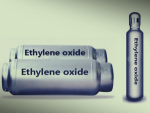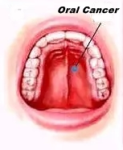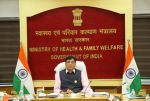By Somrita Ghosh
Jan 13, 2019
New Delhi: Men and women labourers at construction sites who handle cement or are exposed to it are at high risk of contracting skin infections owing to the harmful chemicals it contains, a new study conducted by the All India Institute of Medical Sciences (AIIMS) here has found.
The study, conducted by the AIIMS Department of Dermatology and Venereology along with Sweden’s Lund University with key researchers being Dr Kaushal Verma and Dr Magnus Bruze, found that major concentrations of chemicals like hexavalent chromium in cement can leads to skin problems like dermatitis, eczema, rashes and burning sensation, among others.
“At AIIMS, we have been seeing many patients working in the construction industry and had been suffering from major skin allergies. After we witnessed a rise in the number of patients with such cases we decided to conduct a study,” Dr Verma, Professor, Department of Dermatology and Venereology, AIIMS, told IANS.
Occupational skin diseases constitute an important burden among workers in the construction industry. As per the study, occupational exposure to cement can also cause skin reactions like cement burns, toxic paronychia, subungual necrosis, folliculitis and petechiae.
Seven to eight cement samples available in Indian market were considered for the study. Dr Verma said the study found that the potassium dichromate chemical, a major reason for skin allergies, was present in most of the samples.
As for initial symptoms, it begins with drying of skin and itching and later escalates to major allergies among those who have been working for two or more years in the construction industry.
“The initial symptoms emerge after working for several months. But the construction workers tend to ignore this as they are not aware of the health hazards. At AIIMS, many patients who have been working for more than two years have come with severely damaged skin,” Dr Verma added.
While wet cement was found to be more harmful than dry cement, Dr Verma further pointed that it is the latter which usually in greater touch with the skin because it gets amalgamated with the air.
Other than the hands, cement allergy can also emerge in other parts of the body like the feet, arms, neck and even the face which are exposed to the elements.
“Once allergies (of any kind) develop on the skin, they remain for a long time and similar is the case with hazards to the skin arising from cement. The body tends to quickly react to any substance that doesn’t suit it,” Dr Verma added.
Talking about the possibilities of treatment and cure of occupational skin diseases, Dr Verma said this depends on how major the allergy is and which parts of the body it has spread to.
If the skin allergy is in its initial phase, then it can be easily cured in two to four weeks with corticosteroids, anti-allergy tablets and drugs, creams, ointments and lotions.
“However, if the problem escalates and becomes serious then one might have to take corticosteroid tablets and injections. In some cases, azathioprine and cyclosporine (immuno-supressive medication) can also be prescribed if corticosteroids fail to give relief. That might take around a few months for cure, but such cases are limited,” Dr Verma added.
However, before the treatment starts, a patient needs to go through a “patch test” which, Dr Verma said, often is a cumbersome process as many of the hospitals do not have the facility.
“Unlike other tests, in the patch test, the patient needs to keep visiting the hospital or clinic for a week. The treatment is based on the report,” he noted. While the test is done for free at AIIMS and other government hospitals, it can be prohibitively expensive at private faciities, costing anything upwards of Rs 10,000.
If someone is completely detached from any association with cement there is no risk of occupational skin diseases recurring.
“But if one again goes back to the same construction work then the allergies will start appearing in seven to eight days,” Dr Verma stated.
Another solution which the study suggests is mixing of ferrous sulphate (used to treat iron deficiency anemia) with the cement which can reduce the effect of harmful chemicals.
“Adding ferrous sulphate, however, might lead to increase in cost of production and cement prices might go up — but it can help to minimise the risk of cement allergy in India,” Dr Verma pointed out.
IANS



















